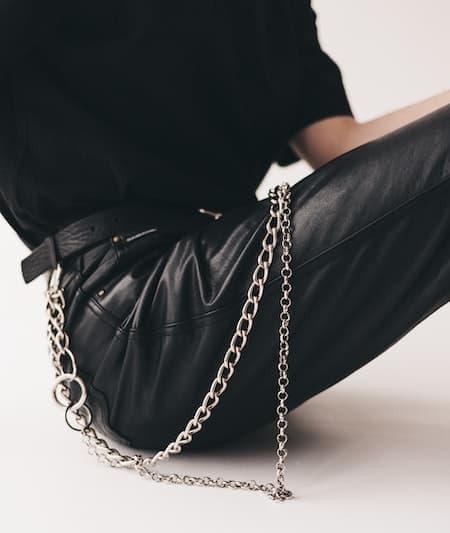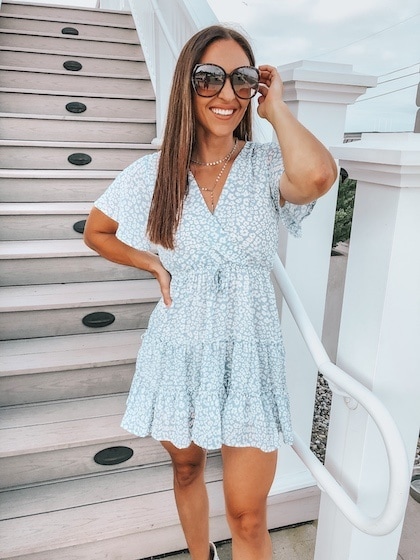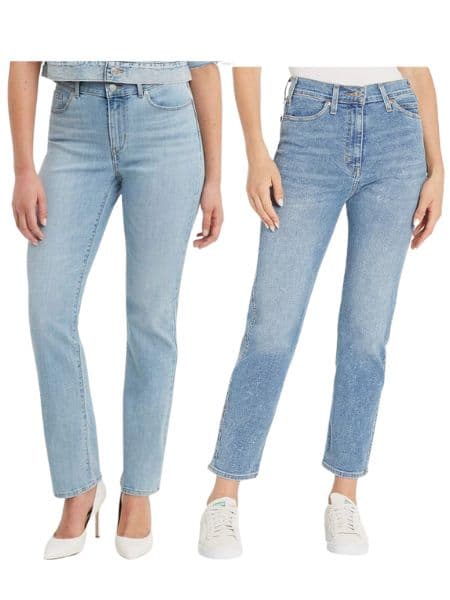What To Wear For Physical Therapy
If you’re getting ready for your first physical therapy session, you may be wondering what to wear.
Physical therapy visits can be intimidating, and it’s important to have the proper clothing.
Comfort and functionality are key factors, and you’ll want to make sure the clothing you choose is a good option for performing exercises.
While you will likely go over this information at your physical therapy evaluation and there is no set dress code for PT, there are some pretty standard things you should know before heading in.
I’ve been an athlete my whole life, and I’ve had my fair share of physical therapy sessions, so I’m confident that my tips will guide you in the right direction.

What to Wear for Physical Therapy
Depending on what you’re going to physical therapy for, your garment choices may vary.
Although you may assume workout clothes are best, that’s not always the case.
For example, for a shoulder injury, you will likely want to wear something that allows for ease of use with equipment and range of motion in the injured area, like a tank top.
For a shoulder injury, you can likely get away with wearing whatever you want for bottoms as they will likely have zero interference with the treatment of your shoulder.
However, for something like a quad injury, you will want to stay away from leggings (which many women wear for working out).
The reason for this is that your therapist will often do so manual work. Not only do they need to be in direct contact with the area in question, but they may also use products – like a gel or cream.
Hence, why you would not want to wear leggings.
Here are some of the most common clothing items for a physical therapy treatment, pending what exercises you will be doing.

Loose-Fitting Pants & Shorts
Loose clothes allow for full and proper treatment of the injured area.
Here are some options to consider when going to treatment for a lower body injury:

Loose-Fitting Tops
Loose-fitting tops are best for upper body injuries as they can be easily moved out of the way to give your therapist direct access to the injured area.

Supportive Undergarments
The right undergarments are just as important in PT as they are in your regular workouts.
Here are a few staples we recommend:

Athletic Shoes
As a general rule of thumb, sneakers are the best shoes to wear for physical therapy.
Here are a few great options:
Why Clothing Choice Matters in Physical Therapy
Your clothing choice may seem insignificant, but it can actually make a huge difference in your physical therapy session.
The right clothes can give you the necessary range of motion and flexibility for therapy, while the wrong ones can hinder your performance.
From preventing injuries to optimizing your movement, there are lots of reasons to wear specific types of clothing to a physical therapy clinic.
The Importance of Comfortable Clothing for Physical Therapy
Appropriate clothing for physical therapy can support your physical therapy goals, ensure safety, and provide comfort.
So when you’re choosing clothing for physical therapy, it’s important to select pieces that allow you to move freely without constricting your body or limiting your range of motion.
Breathable fabrics that will keep you cool and won’t restrict you are the best option.
Avoid any clothing that could get in the way of exercises or get caught on equipment, like long strings or ties.
It’s also important to wear clothing that will provide support and protection while you’re exercising.
Clothing should fit securely and provide support, like a sports bra for female patients.
The best way to prevent injuries when jumping, running and stretching is to wear shoes with proper cushioning and arch support.
As much as possible, it’s best to wear clothes that are comfortable and that make you feel confident.
Choose something that makes you feel your best and won’t make you feel self-conscious, while not restricting any parts of your body.
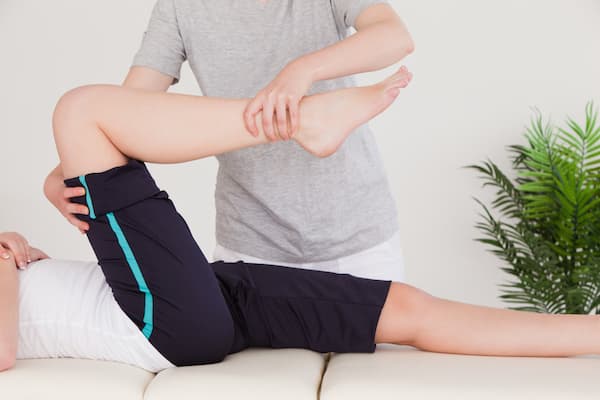
Choosing Breathable and Moisture-Wicking Materials
When it comes to choosing the right clothing for physical therapy, choose materials that are breathable and moisture-wicking.
These materials allow sweat to evaporate quickly, keeping you dry and comfortable during your session.
Breathable fabrics like cotton and mesh help regulate your body temperature and help you stay cool.
Moisture-wicking materials like polyester and nylon draw sweat away from your skin, reducing the risk of skin irritation and odors.
By opting for breathable materials, you’ll have a much better physical therapy experience.
Proper Footwear for Physical Therapy
When choosing footwear for physical therapy, consider options that provide support, stability, and comfort.
Look for shoes with good arch support and cushioning to help absorb impact and reduce strain on your feet and joints.
Non-slip soles are helpful to prevent accidents and maintain your balance during exercises.
You should consider wearing athletic, running, or tennis shoes that are designed for physical activity.
Appropriate footwear provides the necessary support and protection for your feet during therapy.

Proper Attire for Different Types of Exercises
Physical therapy patients are normally doing various exercises at appointments.
Whether you’re doing strength training, balance exercises, or stretching, the right clothing can enhance your performance and help prevent injuries.
For strength training, opt for more fitted (but not super tight) clothing that allows for a full range of motion.
For balance exercises, consider wearing non-slip socks or shoes with good traction.
And for stretching, choose clothing that is flexible and allows you plenty of freedom of movement.
Making sure you have the right clothing for each type of exercise will optimize your physical therapy session and get the most out of your workout.
Clothing to Avoid for Physical Therapy
For best results at physical therapy, avoid these types of clothing:
Uncomfortable materials
Materials that aren’t moisture-wicking or don’t feel good on your skin can be distracting.
Be sure to choose something that feels good and does a good job of keeping your skin dry.
The last thing you want to do is cut your session short because you can’t properly perform the exercises because of your clothes.
Tight clothes
Yoga pants are great to move around in, so you might be wondering why they aren’t a good choice for physical therapy.
It’s because sometimes the physical therapist needs actual contact with the affected body part to get a good grip for manual therapy and will need to move your pants out of the way in the treatment area.
That’s why loose-fitting clothing trumps yoga pants or a tight tank top.
Loose fitting pants like joggers with an elastic waistband and elastic bottoms are ideal and a loose-fitting shirt like a flowy tank or a loose-fitting t-shirt are great all for the simple reason that they can be moved around when needed.
Bulky accessories
Any accessory like a watch, large necklace, dangling earrings, and anything else that can get in the way when you’re moving around in different positions should be left at home.
Be sure to consider everything you’re wearing before you go into your appointment.
Don’t stress though, at your first physical therapy appointment, your therapist will let you know general guidelines for you to follow for the next appointment.
Improper Shoes
There are many shoes to want to avoid when going to physical therapy.
For example, dress shoes, open-toe shoes like flip-flops, high heels, boots, and sandals are all poor choices for PT.
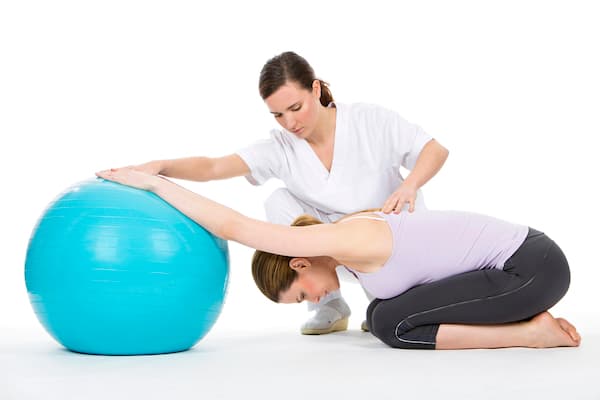
Other Things to Consider When Dressing for Physical Therapy
- If you have to go to work or another appointment where you cannot wear your clothing for physical activity, bring a change of clothes to your appointment.
- Consider wearing layers that can be easily removed or added depending on your body temperature during the session.
- If you have long hair, make sure you take a hair tie and keep it up and out of the way. This is especially important if you’re in therapy for upper body issues where longer hair would be a problem for easy access to the upper back area.
- Choose your clothing for easy access to the affected area depending on the type of injury you have. For instance, short sleeves may be a good idea with the therapist’s needs to do elbow work, or capris might be helpful if you’re getting physical therapy on an ankle injury or calf muscle.
Conclusion
The easiest way to get the most out of your physical therapy appointment is to dress properly.
However, don’t be afraid to ask questions at your first appointment so that you are comfortable and confident going forward.
Just remember that loose-fitting clothing is most often preferred and sneakers are the best choice for footwear.
Other Posts You Might Like:
